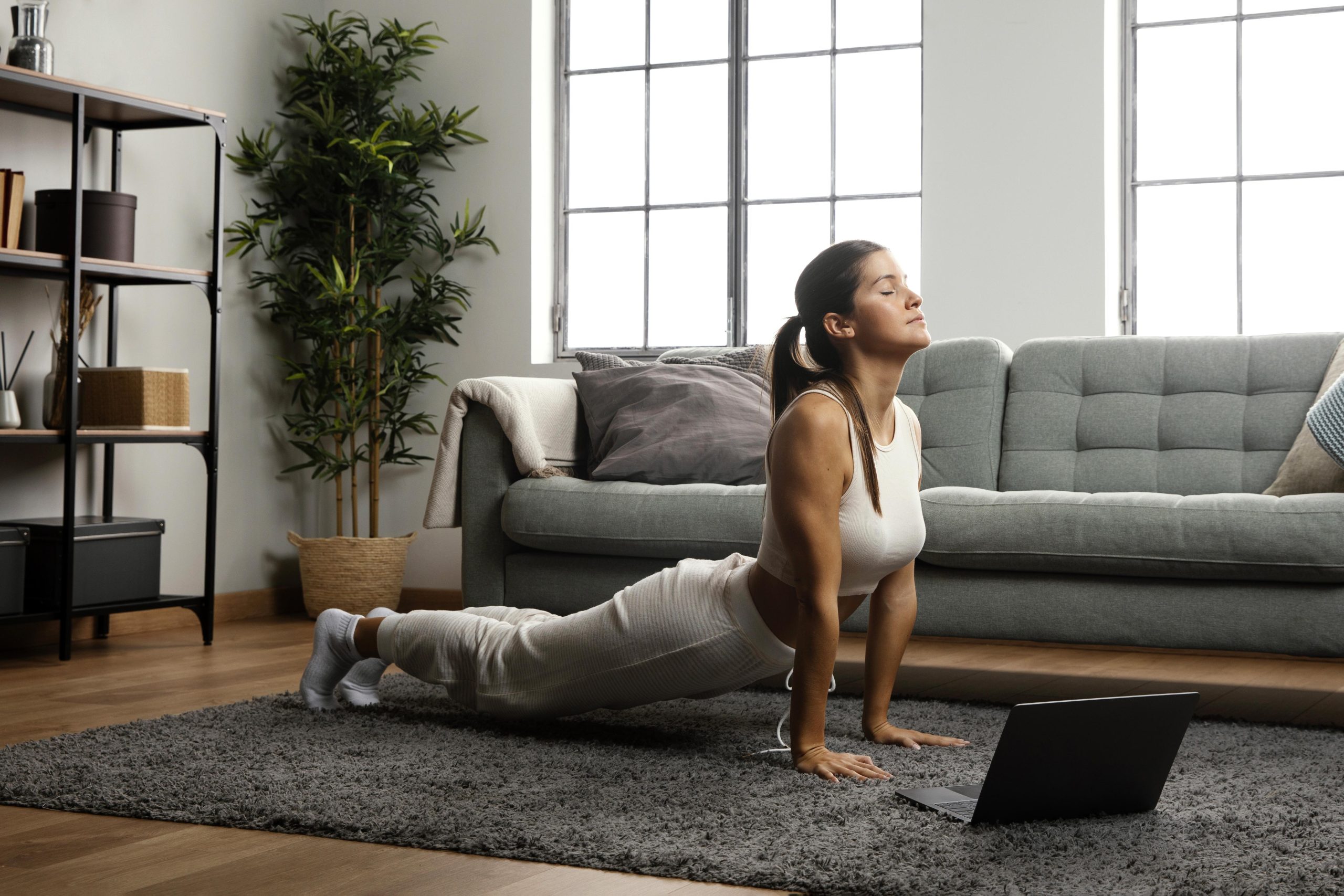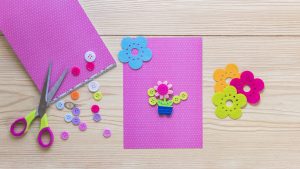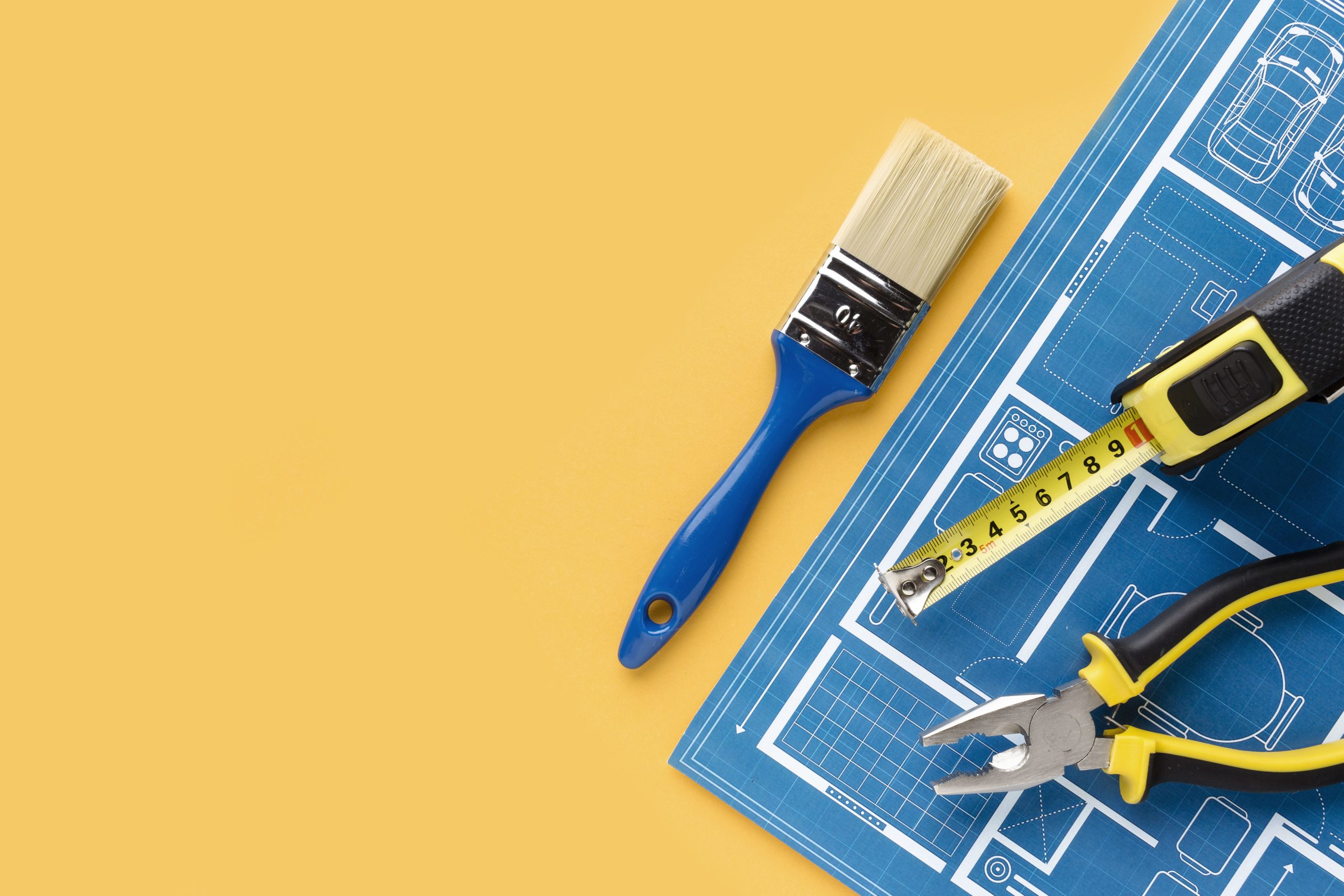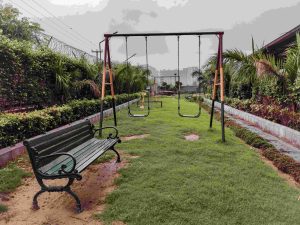DIY Tips
How to Create a Home Gym on a Budget for Effective Workouts

Have you ever wanted to have an effective workout without breaking the bank?
If so, you’re in luck!
In this post, I will share with you my top tips for creating a DIY home gym that will provide you with everything you need for a great workout, all while staying within your budget.
When it comes to working out at home, it’s important to have the right equipment and setup to ensure that you can achieve your fitness goals.
From choosing the right space in your home to selecting the essential equipment, I will walk you through the process of building a home gym that will allow you to get the most out of your workouts without spending a fortune.
Whether you’re a beginner looking to get in shape or a seasoned athlete wanting to maintain your fitness level, these tips will help you create a home gym in Australia, that is not only affordable, but also highly effective.
Key Takeaways:
- Plan and budget before purchasing any equipment to avoid overspending or purchasing unnecessary items.
- Consider multi-purpose equipment such as resistance bands and adjustable dumbbells to save space and money.
- Look for second-hand equipment through online marketplaces or local classifieds to find affordable options.
- Create a dedicated workout space in your home, such as a corner of a room or a garage, to solidify your commitment to regular workouts.
- Use bodyweight exercises such as push-ups, squats, and planks as effective workout options that require minimal equipment.
- Focus on essentials such as a yoga mat, stability ball, and resistance bands to build a well-rounded home gym without breaking the bank.
- Seek out DIY alternatives for certain equipment, such as using filled water bottles as light weights or finding household items to use in place of traditional gym equipment.
Planning Your Home Gym in Australia
Any successful home gym starts with a solid plan.
Before you start purchasing equipment and rearranging furniture, take the time to evaluate your space, select essential equipment, and create a layout for your workout space.
This planning phase is crucial for creating a functional and effective home gym that suits your needs and budget.
Evaluating your Home Gym Space and Location
When evaluating the space for your home gym, consider the available square footage, ceiling height, and natural light.
Choose a location that is easily accessible and well-ventilated to ensure a comfortable workout environment.
Additionally, consider the proximity to utilities, such as electrical outlets and water sources, as some equipment may require access to power or hydration.
Essential Equipment required for your Home Gym in Australia
When selecting essential equipment for your home gym, consider your fitness goals and available space.
Focus on versatile, multi-purpose equipment that can accommodate a variety of exercises. Look for durable, high-quality items such as a strong>set of dumbbells, resistance bands, a yoga mat, and an adjustable bench.
You can also explore budget-friendly alternatives such as DIY options or purchasing gently used equipment to save money.
After considering your needs and budget, prioritize equipment that will provide the most comprehensive workouts.
- Consider versatile, multi-purpose equipment.
- Look for durable, high-quality items within your budget.
- Prioritise equipment that will provide comprehensive workouts.
Creating a Layout for Your Workout Space
Once you have selected essential equipment, create a layout for your workout space that maximizes functionality and safety. Position larger pieces of equipment towards the center of the room to allow for adequate space around them.
Consider storage solutions for smaller items to keep your workout space organized and safe. Lastly, ensure that your layout promotes a positive and motivating workout environment.
Budgeting Strategies for your Home Gym
Keep in mind that creating a home gym on a budget requires careful planning and resource management.
By setting a realistic budget and prioritizing expenses, you can make the most of your available funds to build an effective workout space without breaking the bank.
How to Set a Realistic Budget for your Home Gym in Australia
When establishing a budget for your home gym, it’s essential to take an inventory of your current financial situation.
Consider your monthly income, existing expenses, and any potential additional costs associated with creating your home gym.
Identify how much you can comfortably afford to invest in this project without compromising your financial stability.
Tips for Prioritising Expenses
When working with a limited budget, it’s crucial to prioritize your expenses effectively. Start by allocating funds to the most essential items that will directly contribute to your workouts.
Key items such as strength training equipment, cardio machines, and adequate space for exercise should take precedence.
Consider opting for versatile equipment that allows for multiple exercises, effectively maximising your investment.
Research potential discounts, promotions, or second-hand options for essential gym equipment to make the most of your budget.
Identify non-essential items that can be added over time as your budget allows.
It’s important to differentiate between what you want and what you actually need for effective workouts. Recognising the difference will help you stay within your budget and avoid unnecessary expenses.
Cost-Effective Equipment Options
For many people, creating a home gym on a budget means making smart choices when it comes to purchasing equipment.
Luckily, there are several cost-effective options available that can help you build a functional home gym without breaking the bank. Here are some affordable equipment options for your home gym:

A man doing HIIT exercise at home.
DIY Equipment Solutions
If you’re looking to save money on gym equipment, consider creating your own DIY solutions.
For example, you can use common household items such as water bottles filled with sand or rice as makeshift weights for resistance training.
Additionally, you can use a sturdy chair for step-ups, tricep dips, and other exercises.
Another cost-effective alternative is using resistance bands for strength training, which are inexpensive and can be easily stored in a small space.
By getting creative and thinking outside the box, you can effectively equip your home gym without spending a fortune.
Using Multi-purpose Fitness Tools
Another way to create a budget-friendly home gym is by using multi-purpose fitness tools.
For instance, instead of investing in a full set of dumbbells, you can opt for adjustable dumbbells that allow you to change the weight settings.
Additionally, investing in a stability ball not only provides a comfortable surface for various exercises but also doubles as a chair for improved posture and core engagement.
Resistance bands, which can be used for upper and lower body workouts, are another versatile option.
By incorporating these multi-purpose fitness tools into your home gym, you can save money and space while still achieving an effective workout.
Finding Bargains and Discounts
Not everyone has the luxury of investing in expensive gym equipment for their home gym. However, you can still find great bargains at Big W, Rebel and Target and discounts on workout equipment that will help you create an effective home gym without breaking the bank.
Sourcing Second-hand Equipment
When looking to create a home gym on a budget in Australia, sourcing second-hand equipment can be a great way to save money.
You can often find quality workout equipment at significantly lower prices through online marketplaces, garage sales, or second-hand sports stores.
Just be sure to thoroughly inspect the equipment for any damage or wear and tear before making a purchase.
In my experience, I’ve found that you can often find lightly used equipment that is in great condition for a fraction of the cost of new equipment.
Leveraging Sales and Discount Offers
Another way to create a home gym on a budget is to keep an eye out for sales and discount offers at sporting goods stores or online retailers.
Many stores such as Rebel, offer seasonal sales or special promotions on Boxing Day or Black Friday, where you can find discounted workout equipment.
Additionally, signing up for email newsletters or loyalty programs from these retailers can give you access to exclusive discounts and offers.
I’ve saved a significant amount of money on gym equipment by taking advantage of sales and discount offers, allowing me to build a well-equipped home gym without spending a fortune.
Space-Saving Design Tips
Despite the challenges of limited space, creating a functional home gym is absolutely possible.
By implementing some space-saving design tips, you can maximize your space while still achieving an effective workout. Here are some key tips to make the most out of your available space:
- Multi-functional equipment: Look for equipment that can serve multiple purposes, such as a folding treadmill or a foldable weight bench.
- Wall-mounted storage: Use wall space for storing equipment, such as wall-mounted racks for weights or resistance bands.
- Foldable furniture: Invest in foldable workout benches or chairs that can be easily stored away when not in use.
Knowing how to strategically use your space can make a significant difference in the functionality of your home gym.
By incorporating these space-saving design tips, you can create a workout space that accommodates your needs without overcrowding your home.
Maximising Limited Space
When dealing with a limited area for your home gym, it’s essential to prioritize multi-functional and compact equipment.
Look for foldable or stackable options that can easily be stored away when not in use. Additionally, consider using wall-mounted storage solutions to free up floor space.
By carefully planning the layout of your gym, you can maximize every inch of your available space.
Innovative Storage Tricks
Incorporating innovative storage solutions can significantly impact the functionality of your home gym.
Consider using vertical storage options to maximise space, such as wall-mounted shelves or racks.
Furthermore, investing in storage ottomans or stackable bins can help keep your workout area clutter-free.
By using creative storage tricks, you can efficiently organize your equipment and maintain a tidy workout space.
Staying Motivated in Your Home Gym
Now that you’ve set up your home gym, it’s important to stay motivated to continue your workouts.
One of the biggest challenges of working out at home is the lack of external motivation from trainers or fellow gym-goers.
However, with the right mindset and strategies, you can stay motivated and committed to your home workouts.
Creating a Workout Routine
One of the best ways to stay motivated in your home gym is to establish a regular workout routine.
Set a specific time each day for your exercise session and treat it like an important appointment that you cannot miss.
By creating a consistent schedule, you not only build a habit of exercising regularly, but you also eliminate decision fatigue of when to workout.
This will make it easier for you to stick to your routine and stay motivated.
Tracking Your Progress
Another effective way to stay motivated in your home gym is by tracking your progress.
Keep a workout journal or use a fitness app to record your workouts, as well as your physical measurements and improvements.
Seeing your progress over time can be highly motivating and can encourage you to keep pushing yourself.
Set achievable goals for yourself and celebrate small victories, such as lifting heavier weights or running longer distances.
This will help you stay focused and motivated to continue your fitness journey.
Integrating Technology for Better Home Workouts
Integrating technology into your home gym can also help keep you engaged and motivated.
Consider using fitness apps or wearable devices to monitor your heart rate, track your workouts, and analyse your performance.
Many of these apps offer guided workouts and training plans, which can keep your workouts varied and exciting.
Additionally, streaming workout classes or training videos can provide a sense of community and motivation, as well as expert guidance for effective workouts.
By incorporating technology into your home gym, you can enhance your workout experience and keep yourself motivated to achieve your fitness goals.
Maintenance and Upkeep
Unlike commercial gyms, you’ll need to take care of your home gym equipment yourself.
Regular maintenance and upkeep are essential to ensure that your equipment remains safe and effective for your workouts.
Here are some tips for keeping your home gym in top condition without breaking the bank.
Regular Equipment Care
When it comes to maintaining your home gym equipment on a budget, prevention is key.
I recommend regularly checking all the nuts, bolts, and screws on your equipment to ensure that everything is tight and secure.
This will help prevent any accidents or injuries during your workouts.
Additionally, wiping down your equipment after each use with a clean cloth can help prevent rust and corrosion, ultimately extending the life of your equipment.
Finally, periodically oiling moving parts, such as the joints on your weight bench or the bearings on your treadmill, can help prevent wear and tear, and keep your equipment running smoothly.
Updating Your Home Gym on a Budget
If you’re looking to update your home gym without spending a fortune, there are a few cost-effective options to consider.
First, consider investing in some new accessories, such as resistance bands or a stability ball, to add variety to your workouts without breaking the bank.
You can also keep an eye out for second-hand equipment or sales at fitness stores to score a good deal on quality gear.
Additionally, if your equipment is starting to show signs of wear and tear, don’t be afraid to roll up your sleeves and do some DIY repairs.
A little bit of maintenance and TLC can go a long way in extending the life of your home gym equipment without draining your wallet.
Conclusively Creating a Home Gym on a Budget
Creating a home gym on a budget can be a cost-effective way to stay in shape and get fit.
By using affordable equipment, utilising space effectively, and finding creative solutions, you can create a home gym that suits your fitness needs without breaking the bank.
Remember to shop around for the best deals, consider multi-purpose equipment, and focus on the essentials to maximise your workout potential.
Ultimately, by following the tips and strategies I have outlined, you can create an effective home gym for a fraction of the cost of a traditional gym membership.
This will allow you to have the convenience and comfort of working out at home, while still achieving your fitness goals.
With a little creativity and resourcefulness, you can create a home gym that meets your needs and fits within your budget.
Frequently Asked Questions
Why should I create a home gym on a budget?
Creating a home gym on a budget allows you to save money on a gym membership and provides the convenience of working out at home at any time.
What are the essential pieces of equipment for a budget-friendly home gym?
Essential pieces of equipment for a budget-friendly home gym include resistance bands, dumbbells, a stability ball, a jump rope, and a yoga mat.
How can I find budget-friendly exercise equipment?
You can find budget-friendly exercise equipment by shopping at discount stores, checking online marketplaces such as Gumtree and Facebook Marketplace for used equipment, and looking for sales and deals at fitness equipment stores.
What are some space-saving tips for a home gym?
To save space in a home gym, consider using collapsible or foldable equipment, utilizing wall-mounted storage for small items, and choosing multi-functional pieces of equipment.
How can I create a motivating atmosphere in my home gym?
To create a motivating atmosphere in your home gym, decorate the space with inspirational quotes or images, play energising music, and keep the area clean and organised.
What are some effective workouts I can do in a home gym on a budget?
Effective workouts for a budget-friendly home gym include bodyweight exercises, HIIT workouts, circuit training, and using resistance bands for strength training.
How can I stay motivated to use my home gym regularly?
A: To stay motivated to use your home gym regularly, set specific fitness goals, create a workout schedule, vary your workouts to keep things interesting, and consider inviting a friend to join you for workouts.
DIY Tips
Stress Relief Crafting – DIY Projects to Relax and Unwind

Stress relief crafting can be an incredibly effective way to alleviate stress and find some inner peace.
As someone who has personally experienced the power of crafting as a stress-relief tool, I can attest to its benefits in promoting relaxation and unwinding after a long day.
Whether you’re into knitting, scrapbooking, or painting, there’s a DIY project out there that can help you destress and recharge your batteries.
One of the most important aspects of crafting for stress relief is the opportunity it provides to focus on the present moment.
When you’re engrossed in a crafting project, you can forget about your worries and immerse yourself in the creative process.
Additionally, completing a DIY project can give you a sense of accomplishment and pride, which can in turn boost your mental well-being. In this guide, I’ll be sharing some of my favorite crafting projects that have helped me find relaxation, and I hope they can do the same for you.
Key Takeaways:
- Crafting can be a powerful stress-relief tool: Engaging in DIY projects can help reduce stress and anxiety by promoting mindfulness and providing a creative outlet.
- It’s important to choose the right project: Selecting a crafting project that aligns with your interests and abilities is essential for maximizing the relaxation benefits.
- Regular crafting can improve overall well-being: Consistent engagement in crafting activities can lead to improved mood, increased satisfaction, and a greater sense of accomplishment.
- Crafting with others can enhance the experience: Sharing crafting time with friends or family members can amplify the stress-relief benefits and foster a sense of connection and community.
- Don’t be afraid to experiment and have fun: Embracing creativity, trying new techniques, and approaching crafting with a playful attitude can further enhance the relaxation and enjoyment of DIY projects.
Types of Stress-Relieving Crafts

This can help you find the right activity that suits your interests and helps you manage stress effectively. Here are some of the most popular types of stress-relieving crafts:
| Textile and Fabric Crafts | Paper Crafts |
| Artistic Crafts | Functional Crafts |
Textile and Fabric Crafts
When it comes to textile and fabric crafts, activities such as sewing, knitting, and embroidery can be incredibly soothing and therapeutic.
The repetitive nature of these crafts can help you focus on the present moment and relieve stress as you create something beautiful with your hands.
Working with colorful fabrics and different textures can also be visually stimulating and calming.
Paper Crafts
Paper crafts such as origami, scrapbooking, and journaling can be relaxing and meditative.
The precision and attention to detail required in these activities can help you concentrate on the task at hand, allowing you to escape from stressful thoughts.
Creating something tangible with your hands can also provide a sense of accomplishment and satisfaction.
Artistic Crafts
Engaging in artistic crafts such as painting, drawing, and pottery can be a great way to express yourself and release stress.
These activities allow you to tap into your creativity and can serve as a form of self-expression, providing an outlet for emotions and tension.
The act of creation can be empowering and uplifting.
Functional Crafts
Engaging in functional crafts like woodworking, candle-making, or pottery can provide a sense of accomplishment as you create practical items.
These activities require a combination of physical and mental focus, allowing you to channel your energy into productive endeavors.
The utility of the items you create can also provide gratification and a sense of purpose.
Factors to Consider When Choosing a Stress Relief Craft

Here are some things to keep in mind:
- Personal Interests and Skills: Before choosing a craft, consider your personal interests and the skills you already possess. A project that aligns with your passions and abilities will be more enjoyable and rewarding.
- Time and Budget Constraints: It’s important to consider the amount of time and money you are willing to invest in a crafting project. Some projects may require more resources than others, so it’s important to be realistic about what you can commit to.
- Accessibility of Materials: Some crafts require specialized materials that may be difficult to find. Before starting a project, consider the availability of the materials you will need.
Any crafting project requires careful consideration of these factors in order to ensure a successful and enjoyable experience.
By taking the time to choose the right craft for you, you can set yourself up for a relaxing and fulfilling creative experience.
Personal Interests and Skills
When selecting a craft to tackle, it’s important to consider your personal interests and the skills you bring to the table.
If you have a passion for a particular craft or have experience in a certain area, it may be wise to choose a project that aligns with those interests and abilities.
This will not only make the crafting experience more enjoyable, but it will also allow you to challenge yourself and continue to develop your skills.
Time and Budget Constraints
Another important factor to consider when choosing a craft is the amount of time and money you are willing to invest.
Some projects may require a significant time commitment or may involve expensive materials.
It’s important to assess your availability and resources before diving into a crafting project to ensure that you can see it through to completion without overextending yourself.
Accessibility of Materials
Lastly, consider the availability of the materials required for the craft you are considering.
If the necessary materials are difficult to find or are expensive, it may be a challenge to complete the project.
On the other hand, if the materials are readily accessible, it will be easier to dive into the craft without unnecessary obstacles.
Tips for Setting Up a Stress-Free Crafting Environment
For setting up a stress-free crafting environment, it is important to create a space that promotes relaxation and productivity. Here are some tips to help you get started:
- Organise your space: Keeping your crafting area free from clutter and well-organized can help reduce stress and make it easier to find the supplies you need. Consider using storage containers, shelves, and labeling systems to keep everything in its place.
- Choose the right time of day: Find a time of day that works best for you to engage in crafting. Whether it’s in the morning, afternoon, or evening, carving out a specific time for your creative pursuits can help you establish a routine and reduce stress.
- Create a relaxing atmosphere: Surround yourself with elements that promote relaxation, such as soft lighting, calming scents, and soothing music. This can help create a tranquil environment that allows you to unwind and focus on your crafting projects.
Organising Your Space
When it comes to organising your space for stress-free crafting, it’s important to designate specific areas for different types of supplies and tools.
Use storage solutions such as baskets, bins, and drawers to keep your workspace tidy and free from clutter.
By having a designated spot for each item, you can easily find what you need and avoid frustration during your crafting sessions.
Choosing the Right Time of Day
Finding the right time of day to engage in crafting can make a significant difference in your stress levels.
Some people prefer to start their day with a creative activity, while others find it more relaxing to unwind with crafting in the evening.
Identify a time that works best for you and aligns with your energy levels to make the most of your crafting experience.
Creating a Relaxing Atmosphere
Setting the stage for a relaxing atmosphere in your crafting space can enhance your overall experience.
Consider adding elements such as scented candles, soothing essential oils, and calming background music to create a tranquil environment.
This can help you feel more at ease and allow you to fully immerse yourself in your crafting projects.
Step-by-Step Projects for Stress Relief Crafting for Beginners

Below, I have listed several crafting activities that can help you relax and unwind. Each project is broken down into easy-to-follow steps, making it perfect for beginners.
| Simple Knitted Scarf | Handmade Greeting Cards |
| Painted Rocks for Garden Decoration |
Simple Knitted Scarf
Knitting can be a great way to relax and unwind. To get started on a simple knitted scarf, you’ll need some yarn and knitting needles.
Choose a soft, bulky yarn in your favorite color and pair it with appropriately sized knitting needles. Then, follow a basic knitting pattern to create a cosy scarf that you can wear or give as a gift.
Knitting can be therapeutic and help calm the mind as you focus on the repetitive motions.
Handmade Greeting Cards
Creating handmade greeting cards is a wonderful way to express your creativity and send personalized messages to loved ones.
To start making your own cards, gather some cardstock or blank greeting cards, decorative paper, stickers, and markers.
Cut and glue the decorative paper onto the cardstock to create unique designs, and then add personal messages and embellishments to complete the cards.
Making greeting cards can be a meaningful and enjoyable activity that allows you to connect with others while also relieving stress.
Painted Rocks for Garden Decoration
Painting rocks for garden decoration is a fun and relaxing craft project that can add a personal touch to your outdoor space.
To get started, collect smooth rocks of various sizes and shapes. Then, use acrylic paints and brushes to decorate the rocks with colorful designs, inspirational quotes, or intricate patterns.
Once the rocks are dry, place them in your garden or outdoor area to add a splash of creativity to the environment.
Painting rocks can be a soothing and creative activity that allows you to spend time outdoors while immersing yourself in the painting process.
Remember, the key to finding relaxation through crafting is to choose projects that you enjoy and that allow you to focus on the present moment.
I encourage you to try out these beginner-friendly craft ideas and discover the calming effects of DIY projects.
Pros and Cons of Stress Relief Crafting
To effectively evaluate the benefits and drawbacks of using crafting as a stress relief technique, I have compiled a table outlining the various aspects you should consider before diving into DIY projects as a way to relax and unwind.
| Pros | Cons |
| Provides a creative outlet | Can be time-consuming |
| Offers a sense of accomplishment | Cost of materials |
| Reduces stress and anxiety | Can lead to frustration if project goes wrong |
| Improves focus and concentration | Requires space and storage for materials |
| Can be a social activity | May require learning new skills |
Challenges and How to Overcome Them
While crafting can be a rewarding way to de-stress, it also comes with its own set of challenges.
One common obstacle is the time-consuming nature of DIY projects, which can be a drawback for those with busy schedules.
Additionally, the cost of materials and the need for storage space can be a potential downside.
However, these challenges can be overcome by setting aside dedicated time for crafting and budgeting for materials.
Finding creative storage solutions can also help minimize the impact of clutter in your home.
Incorporating Stress Relief Crafting into Your Daily Routine
Now that you have discovered the benefits of crafting for stress relief, it’s time to think about how you can incorporate this therapeutic activity into your daily routine.
By making time for crafting and treating it as a meditative practice, you can experience the positive effects on your mental wellbeing on a regular basis.
Making Time for Stress Relief Crafting in a Busy Life
As someone with a busy schedule, I understand how challenging it can be to find time for crafting.
However, it’s important to prioritize self-care and make time for activities that bring you peace and joy.
Whether it’s waking up 30 minutes earlier each day or setting aside a couple of evenings each week, you can carve out pockets of time for crafting in your schedule.
By making it a priority, you’ll find that you are better equipped to handle the demands of your daily life.
Remember, it’s okay to say no to other commitments in order to make time for yourself.
Your mental wellbeing is worth the investment, and incorporating crafting into your routine can have a positive impact on your overall outlook and productivity.
Using Crafts as a Meditative Practice
Once you’ve found the time to craft, it’s important to approach it with the right mindset.
Think of your crafting time as a meditative practice, a time to focus on the present moment and let go of any stress or worries.
Engaging in a creative activity allows you to enter a state of flow, where you are fully immersed in the task at hand and your mind can rest from the chaos of daily life.
Whether you’re knitting, painting, or working on a DIY project, use this time to center yourself and find inner peace.
Focus on the sensation of the materials in your hands, the rhythm of your movements, and the satisfaction of creating something with your own two hands.
By incorporating this meditative practice into your daily routine, you’ll find that you are better equipped to face the challenges that come your way.
Happy crafting!
FAQ
Q: Why is crafting a good stress relief activity?
A: Crafting allows individuals to focus their attention on a creative task, which can help reduce stress and anxiety. Engaging in a hands-on activity also promotes mindfulness and relaxation.
Q: What are some popular DIY crafting projects for stress relief?
A: Popular DIY crafting projects for stress relief include knitting, crocheting, painting, coloring, and making handmade soaps or candles. These activities can be both meditative and satisfying.
Q: How does crafting for stress relief impact mental health?
A: Engaging in crafting activities has been shown to reduce levels of cortisol, the stress hormone, and boost the production of dopamine, which can improve mood and reduce feelings of anxiety and depression.
Q: Can crafting help improve overall well-being?
A: Yes, crafting can contribute to overall well-being by providing a creative outlet, fostering a sense of accomplishment, and offering an opportunity for self-expression. These benefits can positively impact mental and emotional health.
Q: Are there any specific crafting techniques that are particularly effective for stress relief?
A: Activities such as knitting and crocheting, known as repetitive motion crafts, have been found to have a calming effect on the mind and body. Additionally, activities that involve tactile sensations, such as pottery or sculpting, can be soothing as well.
Q: How can I incorporate crafting into my stress relief routine?
A: You can incorporate crafting into your stress relief routine by setting aside dedicated time for creative activities, creating a comfortable and organized crafting space, and choosing projects that are enjoyable and personally meaningful.
Q: What are some tips for getting started with crafting for stress relief?
A: To get started with crafting for stress relief, consider trying different types of DIY projects to find what resonates with you. Start with simple, beginner-friendly projects and gradually increase the complexity as you build confidence and skill. Seek inspiration from online tutorials, craft books, or local craft classes.
DIY Tips
Home Renovation on a Budget – DIY Tips for a Fresh Look

Home Renovation on a tight budget doesn’t have to mean sacrificing on style and quality.
With a little creativity and resourcefulness, you can achieve a fresh, modern look for your space without breaking the bank.
Whether you are a first-time homeowner or a seasoned DIY enthusiast, you can transform your space using these cost-effective and easy-to-implement ideas.
Key Takeaways:
- Planning is essential: Before starting any home renovation project, it is crucial to plan and budget for the expenses involved. This will help in prioritizing and sticking to a budget.
- Focus on cost-effective improvements: Look for DIY projects that can make a significant impact on the overall look of your home without breaking the bank. Simple changes like painting walls, updating hardware, or adding new lighting fixtures can make a big difference.
- Reuse and repurpose materials: Instead of buying new materials, consider reusing or repurposing existing items in your home. This could include refinishing old furniture, using leftover materials for smaller projects, or repurposing items for a new function.
- Shop smart: Take the time to compare prices and look for sales or discounts on materials and furnishings. Consider shopping at thrift stores, garage sales, or online marketplaces for budget-friendly finds.
- Invest in quality where it matters: While it’s important to stick to a budget, it’s also crucial to invest in quality materials for areas that see heavy use, such as flooring, countertops, and appliances. This can save money in the long run by avoiding the need for frequent replacements.
 Planning Your Home Renovation
Planning Your Home Renovation
Some people dive headfirst into a home renovation project without a clear plan, ending up with an unfinished, expensive mess.
To avoid this, it’s crucial to spend time planning your home renovation to ensure you achieve the results you want within your budget.
Setting Realistic Goals and Budgets
When planning your home renovation, start by setting realistic goals and budgets.
Take the time to assess what you want to achieve with your renovation and how much you can realistically afford to spend.
Consider the scope of the project and prioritise the key areas where you want to make an impact.
Set clear, achievable goals to guide your renovation process, and be realistic about what you can accomplish with your budget.
Identifying Key Areas for Impact
It’s essential to identify the key areas in your home where you want to create an impact with your renovation.
These could be high-traffic areas like the kitchen or living room, or spaces that are in need of a refresh, such as the bathroom or bedroom.
By focusing on these key areas, you can make the most significant impact with your budget, transforming the look and feel of your home without breaking the bank.
Identify the areas that are most important to you and prioritize your renovation efforts accordingly.
 Types of Budget-Friendly Home Renovations
Types of Budget-Friendly Home Renovations
Obviously, when renovating on a budget, it’s important to focus on cost-effective updates that can make a big impact.
Here are some budget-friendly renovation types that you might want to consider:
| Cosmetic Updates | These updates focus on the aesthetic appeal of your home and can include things like painting, updating hardware, and refreshing fixtures. |
| Structural Changes | These are more extensive updates that can involve reconfiguring a layout, adding or removing walls, or updating flooring. |
| Energy-Efficiency Upgrades | Implementing energy-efficient solutions such as improved insulation, new windows, and efficient appliances can help save money in the long run. |
| DIY Projects | Undertaking projects yourself can save on labor costs, and with the right tools and guidance, you can achieve impressive results. |
| Small Space Solutions | Maximizing the use of every space in your home can make it feel larger and more functional without breaking the bank. |
Cosmetic Updates for Maximum Effect
When it comes to cosmetic updates for a budget-friendly renovation, a little bit can go a long way. Simple changes such as a fresh coat of paint, updated lighting fixtures, or new cabinet hardware can have a huge impact on the look and feel of your home. These small changes can make a big difference without costing a fortune, allowing you to transform the look of your home in a cost-effective way.
Structural Changes that Won’t Break the Bank
For structural changes that won’t break the bank, it’s important to focus on updates that have a big visual impact without requiring extensive renovation costs.
This could include simple changes such as updating flooring or reconfiguring the layout to make the most of the existing space.
By focusing on high-impact changes, you can achieve a fresh new look without exceeding your budget.
 Step-by-Step DIY Tips
Step-by-Step DIY Tips
Despite the challenges that come with renovating a home on a budget, there are several DIY tips that can help you achieve a fresh look without breaking the bank.
Here are some essential steps to consider:
- Assess the scope of work: Before diving into any renovation project, it’s important to assess the scope of work and determine what needs to be done. Take note of the areas that require the most attention and prioritise your tasks accordingly.
- Set a budget: Establish a realistic budget for your home renovation. Consider factors such as materials, labor, and unexpected expenses. Having a clear budget in mind will help you make informed decisions throughout the renovation process.
- Research DIY techniques: Take the time to research DIY techniques for the specific projects you want to tackle. There are countless resources available online, including tutorials, forums, and videos, that can provide valuable insights and guidance.
- Invest in quality tools: While DIY renovations can help you save money, it’s important to invest in quality tools to ensure the job is done right. Quality tools can also help you avoid costly mistakes and rework.
Comprehensive Guides for Common Renovations
For common home renovations such as painting, flooring, or updating fixtures, it’s essential to have comprehensive guides that can provide step-by-step instructions and valuable tips.
These guides can help you navigate through the renovation process with confidence and ensure that the end result meets your expectations.
Factors to Consider Before Starting
After deciding to renovate your home, there are several factors to consider before starting the project. These include budget, time commitment, skill level, and whether to DIY or hire a professional. Each of these factors plays a crucial role in the success of your home renovation project.
- Budget: Assess your finances and determine how much you can realistically afford to spend on the renovation project. Consider the cost of materials, labor, and any unexpected expenses that may arise during the renovation.
- Time Commitment: Evaluate how much time you are willing to dedicate to the renovation project. Factor in your work schedule, family commitments, and any other obligations that may affect the time you have available for the renovation.
- Skill Level: Be honest with yourself about your level of experience and expertise in home renovation. Consider whether you have the necessary skills to complete the project on your own, or if you will need to hire professionals for certain aspects of the renovation.
- DIY vs. Professional Work: Determine whether you will take on the renovation as a DIY project or if you will hire professionals to handle certain aspects of the work. Consider the pros and cons of each approach before making a decision.
The decisions you make regarding these factors will impact the overall outcome of your home renovation project, so it’s important to carefully consider each one before getting started.
Time Commitment and Skill Level
When it comes to home renovation, time commitment and skill level are two crucial factors to consider. Assessing your availability and expertise is essential in determining whether you can successfully complete the project on your own.
Depending on the scale of the renovation, it may require a significant time commitment and a certain level of skill to ensure a quality result. If you find that you lack the necessary time or expertise, it may be worth considering hiring professionals to assist with the project.
The Pros and Cons of DIY vs. Professional Work
When deciding between DIY and professional work for your home renovation, always weigh the pros and cons of each approach.
While taking on the project yourself can be cost-effective and rewarding, it may also be time-consuming and require a higher skill level than you possess.
Hiring professionals, on the other hand, can ensure a high-quality result but may come with a higher price tag.
Consider the table below as a guide to help you make an informed decision:
| DIY | Professional Work |
|---|---|
| Cost-effective | High-quality result |
| Rewarding experience | Time-saving |
| Potential for mistakes | Higher cost |
| Time-consuming | Dependence on others |
| Opportunity for learning | Professional expertise |
As you can see, both approaches have their advantages and disadvantages.
Evaluate your own abilities and resources to determine which option is best suited for your home renovation project.
Remember that the decision ultimately depends on your individual circumstances and preferences.
Home Renovation on a Budget – DIY Tips for a Fresh Look
Ultimately, renovating your home on a budget is possible with the right DIY tips and tricks. By repurposing old furniture, using paint to refresh a space, and taking on small renovations yourself, you can achieve a fresh look without breaking the bank.
From my experience, I can confidently say that with a little creativity and determination, you can transform your home into a more stylish and comfortable space.
Remember to prioritise your projects, set a realistic budget, and be willing to put in the time and effort, and you’ll be surprised at the amazing results you can achieve.
FAQ
Q: Why should I consider home renovation on a budget?
A: Home renovation on a budget allows you to update and refresh your living space without breaking the bank. Whether you’re looking to enhance the functionality of your home or simply want to give it a fresh new look, budget-friendly renovations can make a big impact without costing a fortune.
Q: What are some DIY tips for home renovation on a budget?
A: Some DIY tips for home renovation on a budget include painting walls and cabinets, updating fixtures and hardware, reusing and repurposing existing materials, and focusing on high-impact areas such as the kitchen or bathroom. These cost-effective strategies can help you achieve a fresh look without spending a lot of money.
Q: How can I prioritise my budget for home renovation?
A: Prioritising your budget for home renovation involves identifying the areas of your home that are in most need of improvement and allocating your funds accordingly. Focus on essential repairs and updates first before considering aesthetic enhancements. This will ensure that your budget is allocated to the most important aspects of your renovation project.
Q: What are some cost-effective materials for home renovation?
A: Some cost-effective materials for home renovation include laminate flooring, MDF (medium-density fiberboard) for cabinets and trim, peel-and-stick backsplash tiles, and recycled or salvaged materials. These options can help you achieve a high-end look without the high-end price tag.
Q: How can I save money on labour costs for home renovation?
A: To save money on labour costs for home renovation, consider tackling DIY-friendly projects such as painting, installing new fixtures, and minor repairs yourself. You can also shop around for reputable contractors and negotiate prices to ensure you’re getting the best value for your money.
Q: What are some common mistakes to avoid when renovating on a budget?
A: Common mistakes to avoid when renovating on a budget include underestimating the true cost of materials and labor, not having a solid plan in place, and making impulsive design decisions. It’s important to carefully plan and budget for every aspect of your renovation to avoid overspending and costly mistakes.
Q: How can I maximise the impact of my budget-friendly home renovation?
A: You can maximise the impact of your budget-friendly home renovation by focusing on small but impactful changes, such as updating lighting fixtures, refreshing paint colors, and adding decorative accents. These simple upgrades can drastically improve the look and feel of your space without requiring a large investment.
DIY Tips
8 DIY Ideas to Transform Your Backyard on a Budget

Renovating your backyard can breathe new life into your outdoor area. It’s more than just aesthetic improvement.
By using your creativity and our budget-friendly ideas, you can give your outdoor space a makeover that will impress your neighbours and make them envious.
A few cheap backyard ideas can turn basic green space into the ultimate outdoor retreat.
No matter if you’re a seasoned gardener or a beginner, these incredible tips and tricks will guide you in creating the perfect DIY backyard decor, all while embracing the “Transform Your Backyard on a Budget” concept.
Add Potted Plants
One fantastic way to add charm and life to your outdoor space is by incorporating potted plants.
- Choose low-maintenance plants – Choose potted plants that require minimal care and retain their beauty throughout the year. Succulents such as Aloe Vera or Jade are perfect choices as they are hardy, drought-tolerant, and come in various sizes and colours. Additionally, consider perennials like lavender or ornamental grasses that are easy to maintain and add texture to your backyard.
- Repurpose household items as planters – Instead of splurging on expensive pots, get creative with your DIY backyard decor. Utilise old terracotta pots, tin cans, buckets, or even shoes as unique planters. Add a fresh coat of paint, decorate them with patterns or decoupage, and transform them into eye-catching pieces of art.
- Create a vertical garden – If you have limited space but still want to add greenery, vertical gardening is the way to go. Upcycle wooden pallets, hanging shoe organisers, or even repurpose an old ladder to create a stunning vertical garden. Fill each compartment or plank with small potted plants or herbs, adding a touch of green to your backyard while making the most of your available space.
- Grow herbs and vegetables – Herbs and vegetables add visual appeal, they also provide a fresh and delicious addition to your meals. Create a delightful outdoor seating area by planting small pots of herbs such as basil, rosemary, or mint. Strategically position them for effortless access when preparing delicious meals or concocting refreshing drinks.
- Hang planters – Display beautiful flowers or trailing plants like petunias, ivy, or ferns in colourful hanging baskets to create a vibrant and cascading look. You can also repurpose old metal baskets or create DIY macramé hangers for a boho-chic touch.
- Incorporate a mix of heights and textures – Mix tall, medium, and trailing plants together to create multidimensional display. Combine different leaf shapes, colours, and textures to make your backyard transformation visually satisfying and captivating.
Install new lighting
- Map out your backyard area and consider where you want your lighting fixtures to be placed. Identify key focal points such as pathways, seating areas, or landscaping features, and determine the type of lighting best suited for each location.
- Choose cost-effective lighting options, such as solar-powered lights as they are environmentally friendly in nature and the fact that they don’t need wiring or electricity. LED lights, for instance, are energy-efficient and have a much longer lifespan compared to traditional incandescent bulbs. This not only saves you money on electricity bills but also on replacement costs.
- Many lighting fixtures have easy installation instructions and there are online tutorials to help you. Remember to prioritise safety and consult an electrician if you’re unsure about any electrical work.
- Enhance your lighting with the versatility of string lights to light up your pergola or patio during gatherings and serve as a decorative element when not in use.
- Use accent lighting to create a cosy atmosphere as soft lighting on trees or colourful lanterns can add depth and visual interest to your space.
- Invest in smart lighting technology to control outdoor lights remotely, save energy, and customise lighting for different occasions and moods.
Paint Outdoor Furniture
This DIY trick helps personalise your backyard decor and turns old furniture into stylish pieces that match your outdoor design.
- Before you begin, evaluate the condition of your outdoor furniture. Scrub away any dirt or debris and repair any damaged or loose parts. Sand down rough surfaces and remove any peeling or chipped paint. A clean and smooth surface is crucial for achieving a professional-looking finish.
- Look for exterior-grade paints that are specifically formulated for outdoor use. These paints are designed to withstand the elements and provide a durable finish. Pick paints that offer UV protection to prevent fading. Consider using a paint sprayer for large-scale projects or a brush for intricate details.
- Decide on a colour scheme that complements your backyard design and personal style. Neutral tones like whites, greys, and blacks can create a timeless look, while bold hues can add vibrancy and personality. Don’t be afraid to mix and match colours or experiment with patterns for a unique touch.
- By applying a layer of primer before painting, you enhance adhesion, extend the lifespan of your paint job, and create a smooth and flawless foundation for your desired paint colour. Choose a primer that matches the material of your furniture, such as metal primer for metal surfaces or wood primer for wooden furniture.
- Invest in high-quality brushes and tools that suit the type of furniture you’re painting. Different surfaces may require different applicators, such as foam brushes for intricate details, angled brushes for corners, or roller brushes for larger areas. Using the right tools will ensure a smoother and more professional-looking finish.
- Instead of applying one thick coat, try applying multiple thin coats of paint. This technique helps achieve better coverage, prevents drips, and allows for easier touch-ups if necessary. Allow each coat to dry thoroughly before applying the next.
- Apply a sealant after the paint dries to protect your newly painted furniture from moisture, UV rays, and wear and tear. This extra layer of protection can extend the lifespan of your furniture’s new finish.
To complete your transformation, add colourful cushions, outdoor rugs, potted plants, or string lights to create a cosy and inviting atmosphere in your upgraded backyard.
Create a fire pit
Creating a fire pit elevates the ambience of your outdoor area. Not only does a fire pit provide warmth and light, but it also provides an excellent focal point for gatherings with friends and family.
- When choosing the location for your fire pit, make sure to consider the size and layout of your outdoor space. It should be placed at a safe distance from any flammable objects or structures. Additionally, factor in wind direction to avoid smoke blowing towards your seating area.
- Building a fire pit on a budget doesn’t mean sacrificing style. Look for affordable materials such as concrete pavers, bricks, or natural stones, which can create a beautiful and durable fire pit.
- DIY projects offer greater customisation and cost savings, but pre-made kits provide convenience as they come with all the necessary components and instructions.
- Improve safety measures by surrounding the pit with non-combustible material like gravel or sand. Also, create a protective barrier to avoid accidental contact with the fire. Always check local regulations and obtain any necessary permits before constructing your fire pit.
- Remove ashes, debris, and any leftover firewood after each use. Regular maintenance not only extends the lifespan of your fire pit but also ensures a safe and enjoyable experience for everyone.
Build a pergola
Building a pergola adds an appealing architectural element to your outdoor area, at the same time providing a shaded retreat for relaxation and entertainment.
- Plan and Design: Consider the size and location that would best suit your backyard. Sketch out the layout, keeping in mind any existing structures or elements you want to incorporate. This initial planning stage will ensure a smooth construction process and a visually appealing end result.
- Choose Cost-Effective Materials – Pressure-treated or cedar lumber offers durability and a natural aesthetic without the hefty price tag. For an eco-friendly touch, go for repurposed or salvaged materials, such as reclaimed wood or recycled materials.
- DIY vs. Professional Help: If you have the necessary skills and tools, taking the DIY route can save you significant amounts of money. However, if you’re unsure or lack the time and expertise, investing in professional help ensures a high-quality pergola while avoiding potential costly mistakes.
- Research Local Regulations: Research and understand any local regulations or permits required for building a pergola. Compliance with codes and regulations will help avoid costly fines or having to redo any work that doesn’t meet the necessary standards. Building within the guidelines will save you both time and money in the long run.
- Include budget-friendly Shades: Instead of expensive custom shades, consider using cost-effective alternatives such as hanging fabric curtains, outdoor blinds, or inexpensive shade sails. These options provide flexibility, allowing you to adjust the amount of shade based on the time of day and your specific needs.
Build a playground
- Check local classified ads, online marketplaces, or yard sales for used equipment in good condition. You can also find DIY playground kits or plans online that can help you save money.
- You can repurpose materials in creative ways. For example, old tires can be made into swings, wooden pallets can be used to build a climbing wall, and PVC pipes can be turned into water features. Think outside the box and explore unconventional materials that can be repurposed.
- Gather a team of friends or family members and make it a fun project. Remember to prioritise safety and follow any necessary guidelines or regulations.
- Use sturdy and durable materials, secure all fasteners tightly, and cushion the ground with mulch, rubber mats, or sand. Regularly inspect and maintain the playground for any repairs or replacements needed.
- Use trees for shade, arrange rocks for climbing, or create a small garden area nearby. These added natural features not only enhance the appearance but also provide additional play opportunities.
- Create a playground that can be enjoyed by children of various ages and interests. Include a diverse range of activities such as swings, slides, climbing structures, and sensory elements. Versatile playgrounds accommodate a wider range of play styles and can be enjoyed for years.
- Paint vibrant colours by incorporating your child’s favourite themes, or hang up some outdoor decorations. These little touches can make a big difference in creating an enjoyable and personalised space.
Install a fence
- Requirements: Consider the height, materials, and style of the fence that best suits your backyard’s aesthetic and your privacy preferences.
- Cost-effective materials: Fence materials like pressure-treated wood, vinyl, or chain link provide durability while being relatively affordable compared to other alternatives.
- Local regulations: Ensure that you are aware of local building codes and regulations regarding fence height, design, and placement. This knowledge will help you avoid any unnecessary fines or issues during and after the installation process.
- Collaboration – If you share a fence line with neighbours, collaborate with them to split the cost. This arrangement can help both parties save money while ensuring a consistent and uniform appearance throughout the neighbourhood.
- Price comparision – Before buying materials, compare prices from different suppliers or hardware stores. This comparison can lead to finding the most affordable option, allowing you to stay within your budget.
- Recycled materials – Consider using reclaimed or recycled materials, such as salvaged wood, for a unique and eco-friendly touch. Not only is this option cost-effective, but it also adds character and charm to your backyard.
- Maintenance: Proper maintenance can prolong the lifespan of your privacy fence, reducing the need for costly repairs or replacements in the future. Regularly inspect for damage, apply protective coatings, and trim any vegetation that may affect its stability.
Create a seating area
- Repurpose pallets – Arrange the pallets side by side, secure them together, and repaint or stain to match your desired aesthetic. Add cushions or outdoor pillows for comfort.
- DIY cinder block benches – Stack the blocks, preferably in an alternating pattern, and place wooden or stone slabs on top for seating. This simple and cost-effective solution provides ample seating space.
- Repurpose tree stumps – Place a sturdy wooden board across the top of multiple stumps for a rustic and charming seating area. Consider sanding and sealing the wood for longevity.
- Hang a hammock – Hammocks offer a relaxing seating option that can instantly transform your backyard. Choose a hammock that fits within your budget and securely attach it between two sturdy trees or using a hammock stand.
- DIY benches from old chairs – Upcycle, paint or stain old chairs to match your outdoor theme and add cushions or pillows for comfort. This creative solution adds a touch of whimsy to your seating area.
- Outdoor rugs – Choose a rug that complements your backyard’s colour scheme and place it beneath your seating furniture. This simple addition adds warmth and style to the space.
Make an outdoor swing using a wooden pallet. Make sure to hang it securely from a robust and stable support. Add cushions or pillows for extra comfort. Enjoy a budget-friendly and unique swing in your backyard.
Expert PRO tip!
Always remember that sometimes less is more. A neatly mowed lawn with well-trimmed edges often looks just as good as an elaborate landscape design.
-
Business2 years ago
How to Earn Money Writing Blog Posts in 2023: A Comprehensive Guide
-
Games2 years ago
How does Dead Space Remake enhance the Horror Classic of 2008
-
Video2 years ago
Everything you need to know about Starfield
-
Health2 years ago
How is Yoga and Pilates Bridging the Gap Between your Mind and Body
-
World2 years ago
Swiss Pharma Powerhouse Acino Expands into Latin America with M8 Pharmaceuticals Acquisition
-
Health2 years ago
Migraine medications significantly improve the quality of life
-
Self Improvement2 years ago
Enhancing Relationships and Emotional Intelligence Through Mindfulness Meditation
-
Video2 years ago
Winners and Losers of the 2023 NSW budget revealed


 Planning Your Home Renovation
Planning Your Home Renovation Types of Budget-Friendly Home Renovations
Types of Budget-Friendly Home Renovations Step-by-Step DIY Tips
Step-by-Step DIY Tips





























